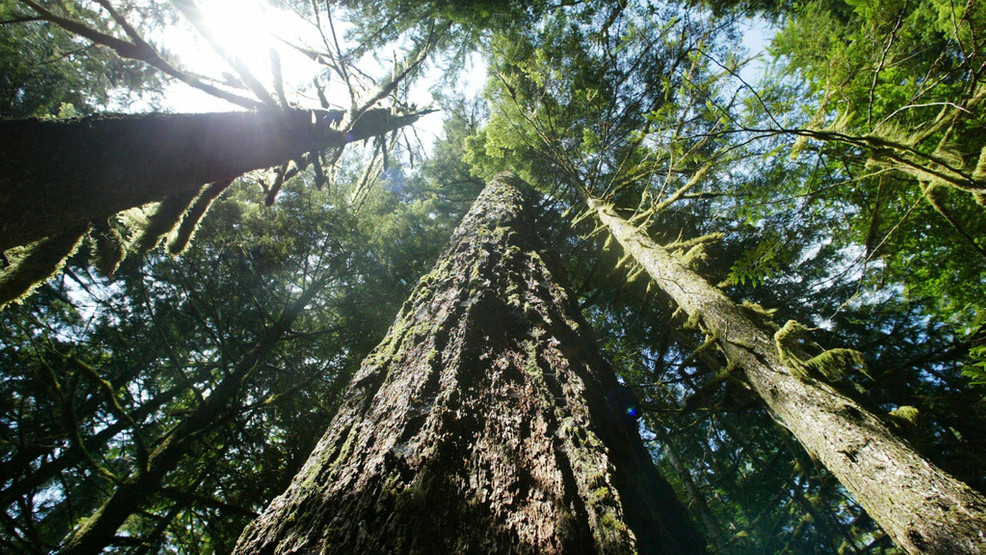Billings, Montana The Biden administration took action on Tuesday to protect old-growth stands in national forests across the United States and limit logging as climate change intensifies the threats they face from wildfires, insects and disease.
Agriculture Secretary Tom Vilsack said the agency is taking an “ecologically driven” approach to old forests, which have historically been dominated by timber industry interests. He said that would include a nationwide revision of management plans for the first time in the U.S. Forest Service’s 118-year history.
The proposal follows long-standing calls from environmentalists to protect ancient forests, which provide important wildlife habitat and other environmental benefits. Timber companies have long fought against logging restrictions on government lands.
RELATED: Biden administration spending millions to advance ‘tree equity’, says tree ‘rights of access’ reduce crime
President Joe Biden’s administration appears to be pursuing a middle ground: It would significantly limit commercial timber harvesting in old-growth forests while allowing logging to continue in “mature forests” that have not yet reached the old-growth forest stage.
“This creates a commitment to resiliency, a commitment to restoring and protecting the old economic growth that we have from the threats that we’re seeing,” Vilsack said in an interview.
Timber industry representatives said Tuesday’s proposal would give its opponents new leverage in their legal challenges to logging projects aimed at reducing wildfire risks in communities near forests. But environmental groups have called for further expansion of logging restrictions and to include mature forests, which cover more than 100,000 square miles (275,000 square kilometers) of Forest Service land, roughly three times the area of old-growth forests.
Old-growth forests, such as northern California’s famous giant redwood groves, contain layers upon layers of undisturbed trees and vegetation. There is broad consensus on the importance of protecting them. Not only are they symbolic and natural wonders, but more practically, their trunks and branches store large amounts of carbon, which is released when forests burn. exacerbating climate change.
Wildfires that have killed thousands of giant sequoias in recent years have highlighted the urgency of the problem. These towering giants are concentrated in about 70 groves scattered along the western side of the Sierra Nevada.
RELATED: Trump-era rule change allowing clearing of old-growth forests violates law, judge says
During the second half of the 20th century, national forests were decimated by large-scale deforestation, with much of the original forest cleared. As America grew, some other programs were cut early.
Logging has declined dramatically over the past few decades, but old-growth trees are dying at an accelerated rate from fire, insects and disease. Since 2000, more than 5,100 square miles (13,300 square kilometers) of old-growth and mature forest have burned.
About 350 square miles (900 square kilometers) of old-growth forest on federal lands was cleared during that period, according to a recent government analysis.
There is no simple formula for determining what is old. Growth rates vary widely between different tree types, even within species, depending on their access to water and sunlight, as well as soil conditions. Aspen groves can mature in half a century. Douglas fir can take 100 years to grow. Wildfire frequency is also a factor: Ponderosa pine forests can withstand fires once a decade, while lodgepole pine forests may burn as often as every few hundred years.
Protections for old-growth trees have been indirect in the past, such as the “roadless rule” adopted by former President Bill Clinton in 2001, which effectively prevented logging on about a quarter of federal forests.
Chris Wood, president of Trout Unlimited and a former Forest Service policy chief, said the Biden administration’s proposal is “a step in the right direction” to protect remaining old growth.
“This is the first time the Forest Service has said its national policy will be to protect old growth,” he said.
Timber companies and some members of Congress have been skeptical of Biden’s ambition to protect ancient forests, which Democrats launched on Earth Day 2021. They urge the government to instead focus on reducing wildfire danger by thinning trees, as decades of wildfire suppression have left the underbrush thick and dense, which could lead to disaster should a fire break out.
“Let’s be clear about the group making this request: They have been opposed to commercial timber harvesting in the national forest system,” said Bill Imbergamo, executive director of the Federal Forest Resources Alliance. “When the majority Is the focus now right when old growth losses are from insects, fires and climate change stressors all working together?”
Earlier this year, the government conducted the first national inventory of mature and old-growth forests on federal lands, showing that there are more acres of old-growth trees than outside researchers had recently estimated. The Forest Service and the federal Bureau of Land Management jointly oversee more than 50,000 square miles (129,000 square kilometers) of old-growth forest and about 125,000 square miles (324,000 square kilometers) of mature forest, according to the list.
Most are in western states such as Idaho, California, Montana and Oregon. They are also found in New England, around the Great Lakes and in southern states such as Arkansas, Kentucky and West Virginia, according to the Forest Service.
Proposals to revise 128 national forest and national grassland management plans are expected to be completed by early 2025. However, if Biden loses the 2024 re-election campaign, there is uncertainty about whether this change can be sustained.
Under former President Donald Trump, federal officials sought to open millions of acres of West Coast forests to logging. Federal wildlife officials reversed that move in 2021 after political appointees under Trump relied on faulty science to justify drastic reductions in forest areas considered critical habitat for the endangered northern spotted owl land.
Asked about the durability of Tuesday’s proposal, Vilsack said, “Now that we have taken a significant step forward, it would be a grave mistake for the country to take a step backward.”
#Biden #administration #takes #action #protect #oldgrowth #forests #climate #change #Cuomo
Image Source : komonews.com
